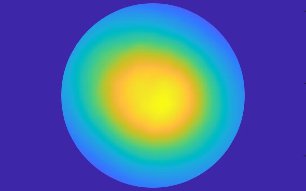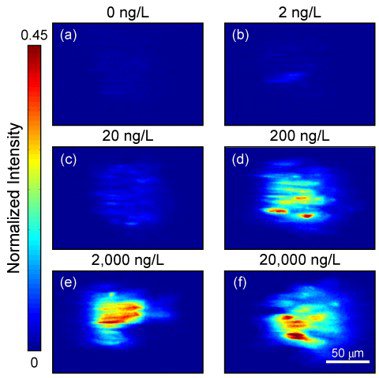SIGNAL PROCESSING
 In clinical laboratories, detecting low concentrations of biomarkers is crucial. To enhance analytical sensitivity, particularly in identifying fluorescently labeled molecules, typical optical detection systems—consisting of a photodetector or camera—utilize time-resolved measurements. Our lab has developed an innovative technology, called magnetic modulation biosensing (MMB). MMB combines fluorescently labeled probes and magnetic particles to create a sandwich assay with the target molecules. By concentrating the target molecules and using time-resolved measurements, MMB enables the rapid and highly sensitive detection of various biomarkers.
In clinical laboratories, detecting low concentrations of biomarkers is crucial. To enhance analytical sensitivity, particularly in identifying fluorescently labeled molecules, typical optical detection systems—consisting of a photodetector or camera—utilize time-resolved measurements. Our lab has developed an innovative technology, called magnetic modulation biosensing (MMB). MMB combines fluorescently labeled probes and magnetic particles to create a sandwich assay with the target molecules. By concentrating the target molecules and using time-resolved measurements, MMB enables the rapid and highly sensitive detection of various biomarkers.

 In collaboration with Prof. Yair Noam's group, we have developed a new signal-processing method. This algorithm improves the detection and estimation of target molecules at low concentrations by utilizing temporally and spatially resolved measurements. In our experiments, we applied this algorithm to human interleukin-8 (IL-8) as a target molecule and observed a 2-4-fold enhancement in the limit of detection (LOD) and approximately a 25% increase in quantitative resolution (QR).
In collaboration with Prof. Yair Noam's group, we have developed a new signal-processing method. This algorithm improves the detection and estimation of target molecules at low concentrations by utilizing temporally and spatially resolved measurements. In our experiments, we applied this algorithm to human interleukin-8 (IL-8) as a target molecule and observed a 2-4-fold enhancement in the limit of detection (LOD) and approximately a 25% increase in quantitative resolution (QR).
Our paper on temporally and spatially resolved signal processing methods was published in 2024 in "Biosensors." The paper, entitled "Using Temporally and Spatially Resolved Measurements to Improve the Sensitivity of Fluorescence-Based Immunoassays," can be found in the Publications section and at DOI:10.3390/bios14050220.
